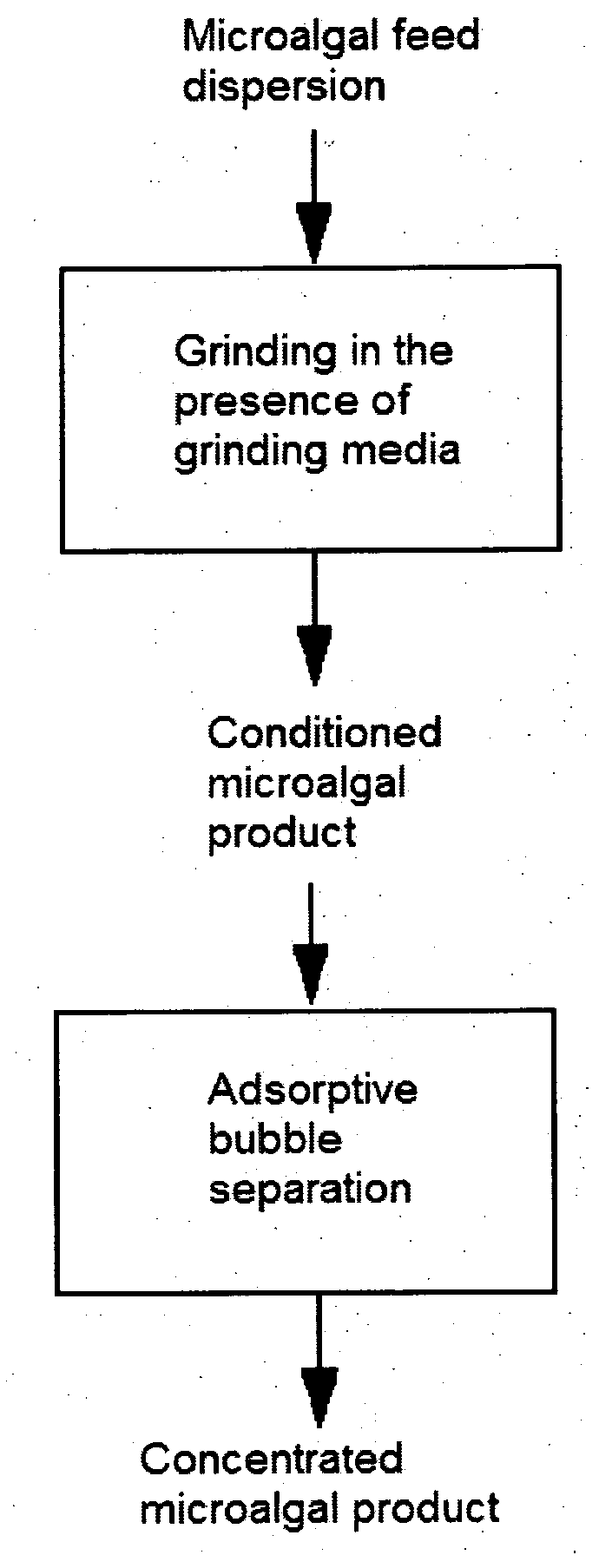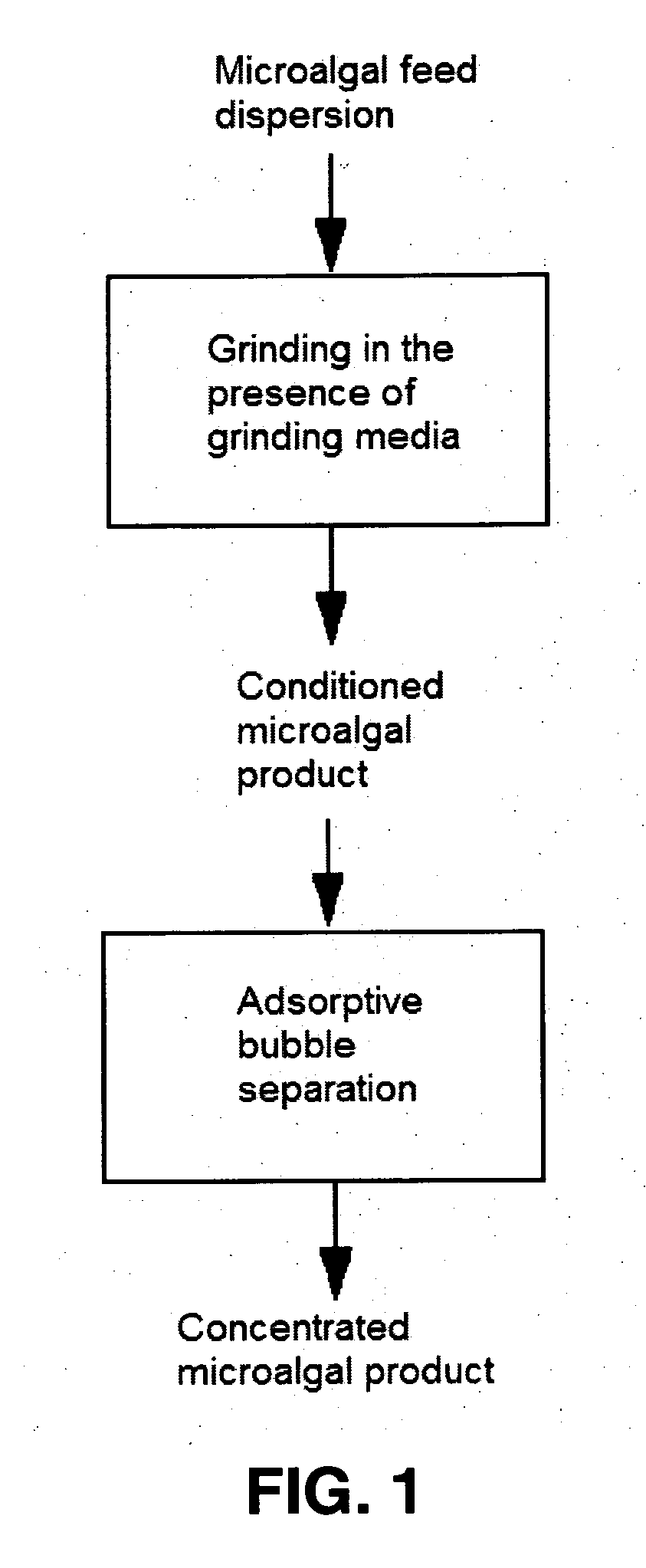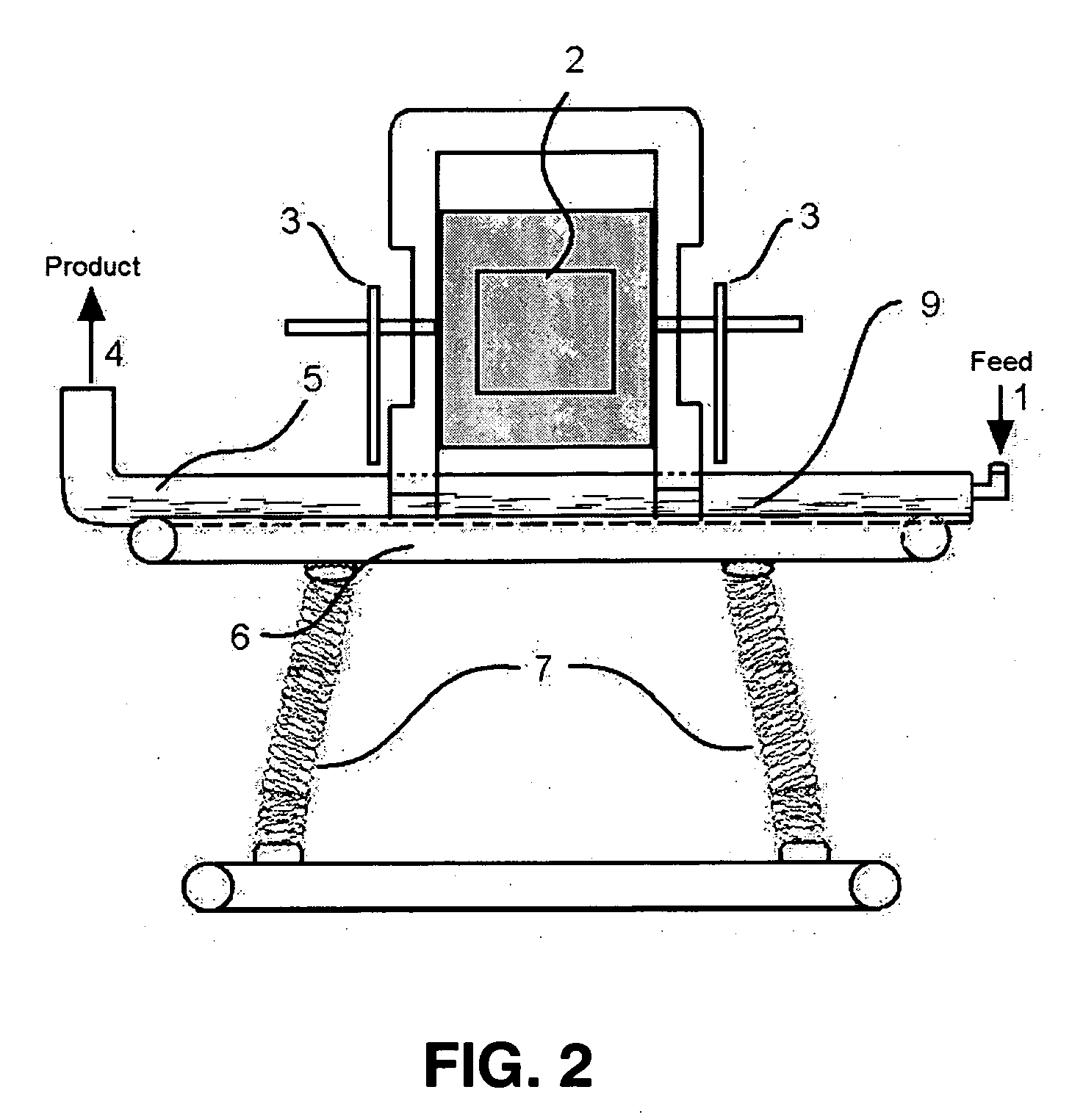Process for microalgae conditioning and concentration
a technology of microalgae and conditioning media, applied in the field of algal utilization, can solve the problems of uneconomical microalgae harvesting technology for handling large volume of growth media, difficult and expensive pre-concentration, and inability to filtration of microalga
- Summary
- Abstract
- Description
- Claims
- Application Information
AI Technical Summary
Problems solved by technology
Method used
Image
Examples
example 1
Continuous Microalgae Rupture Using a Vibratory Grinding Mill
[0059]A series of tests were performed with both a horizontal and a vertical vibratory grinding mill. The mills were constructed of PVC pipe of 0.5-inch, 0.75-inch, and 1-inch pipe. Lengths were varied from 12 inches to 18 inches to vary the residence times. A variable-speed, gear pump was used to feed the mill with aqueous microalgae dispersions. Feed rates varied from 100 mL per minute to 300 mL per minute so as to also vary the residence times. The species of microalgae used was Dunaliella salina, and the feed population varied from 110,000 to 240,000 cells per mL. The horizontal configuration was similar to FIG. 2 and FIG. 3. The speed of the 1 / 40 horsepower motor driving the eccentric weight could be varied from 200 RPM to 5,000 RPM. The eccentric weights were varied from 20 grams to 70 grams. Silica sand of 30 grit was used as the grinding media.
[0060]The feed dispersion enters one end of the tube, and, as it travels...
example 2
Continuous Microalgae Rupture Using an Agitated Bead Mill
[0062]A grinding mill utilizing the rotor-stator design of FIG. 5 was constructed using fourteen 7.25-inch (18 cm) diameter, ⅜-inch (0.95 cm) thick polypropylene disks. The disks were spaced on the rotor at 1.5-inch (3.8 cm) intervals. The mill chamber was constructed from 8-inch (20 cm) inside diameter, Schedule-40 PVC pipe, with a finished length of 40-inches (102 cm). The grinding chamber was charged with 4.5 kg of grinding media (#6 glass beads, 50 / 70 mesh, 210-297 microns) giving it an effective liquid volume of 9.2 liters. The disks were rotated by an electric motor at 200 RPM. The species of microalgae used was Dunaliella salina, and the feed population varied from 460,000 to 650,000 cells per mL. The results (Table 2) indicate that an agitated bead mill performing at optimized residence times can achieve the desired degree of cell rupture needed for adsorptive bubble separation.
TABLE 2TestFeed RateResidence timeCellNum...
example 3
Batch Grinding of Microalgae Using a Vibratory Bead Mill
[0063]This example shows the effect of bead size in vibratory bead mill grinding of microalgae. To a 15 mL plastic test tube was added 3 mL of glass beads with 6 mL of aqueous, saline Dunaliella salina microalgae culture. The initial cell count for the culture was 1,540,000 cells per mL. The tube was capped and vibrated on a vortex mixer on the high setting for a period of time then a cell count was taken to assess cell rupture. The cell count versus time results are summarized in Table 3. No cell rupture occurred in the absence of beads. Data on the bead sizes is given in Table 4. This example shows the advantage of using smaller beads for faster grinding of microalgae under these conditions.
TABLE 3Time (min)Bead #5Bead #6Bead #8Bead #10Bead #120.01,540,0001,540,0001,540,0001,540,0001,540,0000.51,010,000950,000730,000270,000250,0001.0700,000520,000390,00020,00070,0001.5310,000400,000250,00010,00002.0170,000120,00080,000002.516...
PUM
| Property | Measurement | Unit |
|---|---|---|
| pressures | aaaaa | aaaaa |
| diameter | aaaaa | aaaaa |
| size | aaaaa | aaaaa |
Abstract
Description
Claims
Application Information
 Login to View More
Login to View More - R&D
- Intellectual Property
- Life Sciences
- Materials
- Tech Scout
- Unparalleled Data Quality
- Higher Quality Content
- 60% Fewer Hallucinations
Browse by: Latest US Patents, China's latest patents, Technical Efficacy Thesaurus, Application Domain, Technology Topic, Popular Technical Reports.
© 2025 PatSnap. All rights reserved.Legal|Privacy policy|Modern Slavery Act Transparency Statement|Sitemap|About US| Contact US: help@patsnap.com



